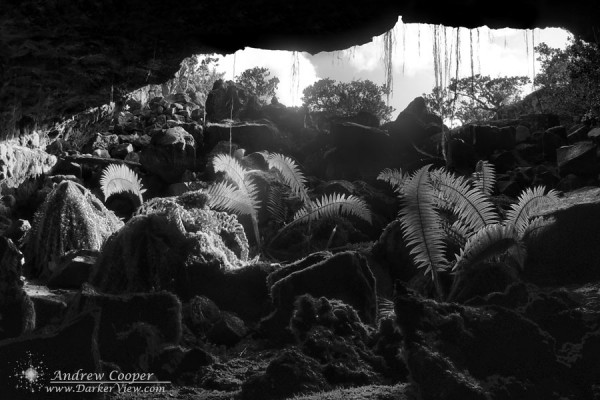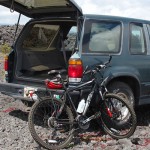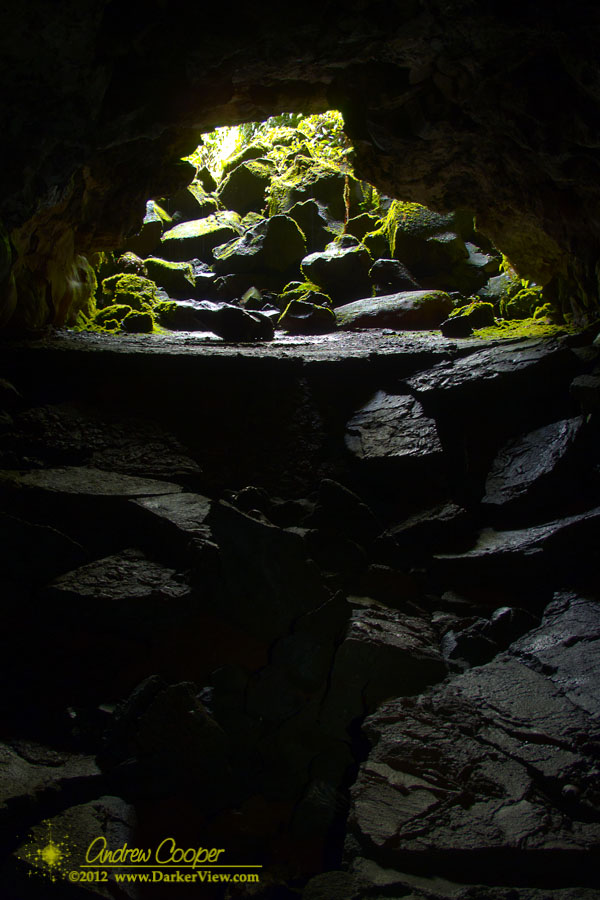
Tag: Emesine Cave
Portal to the Earth
The Trail to Emesine Cave
There are few open paths to trail ride on this island, a place where landowners gate every side road and jealously guard any access. There are a number of exceptions, but you have to look to find them. One such is a power line road off of Saddle Road. The power line is gone now, the stumps of poles remain where they were sawn down years ago. The road runs arrow straight across the landscape, now serving forestry crews, pig hunters and hikers. Enough traffic traverses the path the keep it clear of growth. Here is a glimpse of natural Hawai’i, where invasive species are relatively few and the calls of native birds echo amongst the ‘Ōhi’a.

Emesine Cave
It may be a rough trail, but the goal is worth it, a relatively recent cave with an array of classic lava tube features. Emesine cave, is found in the 1881 lava flow that threatened to flow into downtown Hilo, but stopped just short of the city. Today, over a century later, the cave is now an excellent example of volcanic action and how life returns to reclaim the land afterwords.

The flows did not stop until August 10th 1881, reaching within a few miles of downtown Hilo. Some fingers of the flow crossed the present day Komohana and Kumukoa Streets near the University of Hawai’i at Hilo campus. When the flows finally did stop a number of lava tubes were exposed, including Kaumana caves, a popular tourist attraction above Hilo. Also formed in the eruption was a series of tubes higher on the north flank of the volcano, Emesine cave.

